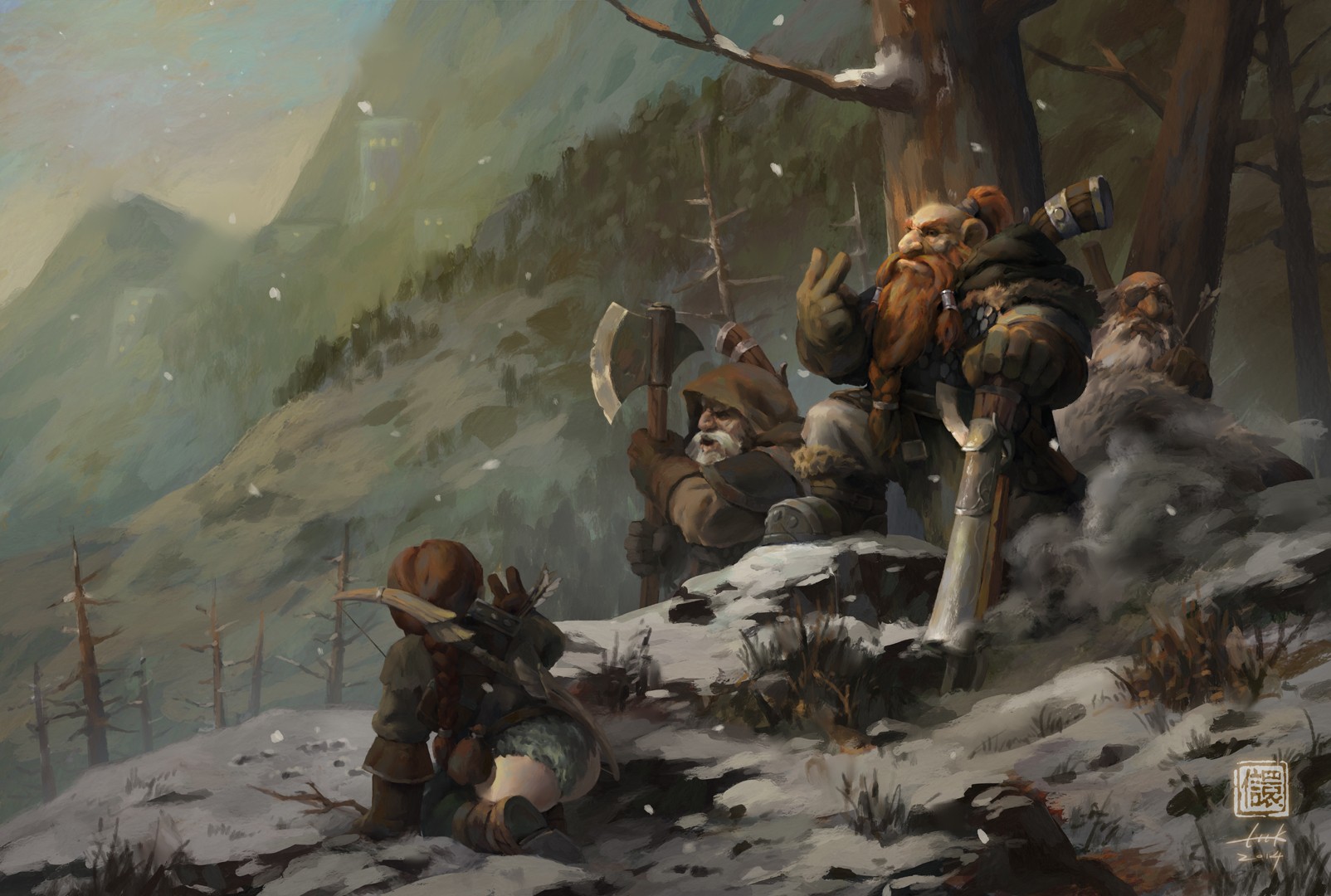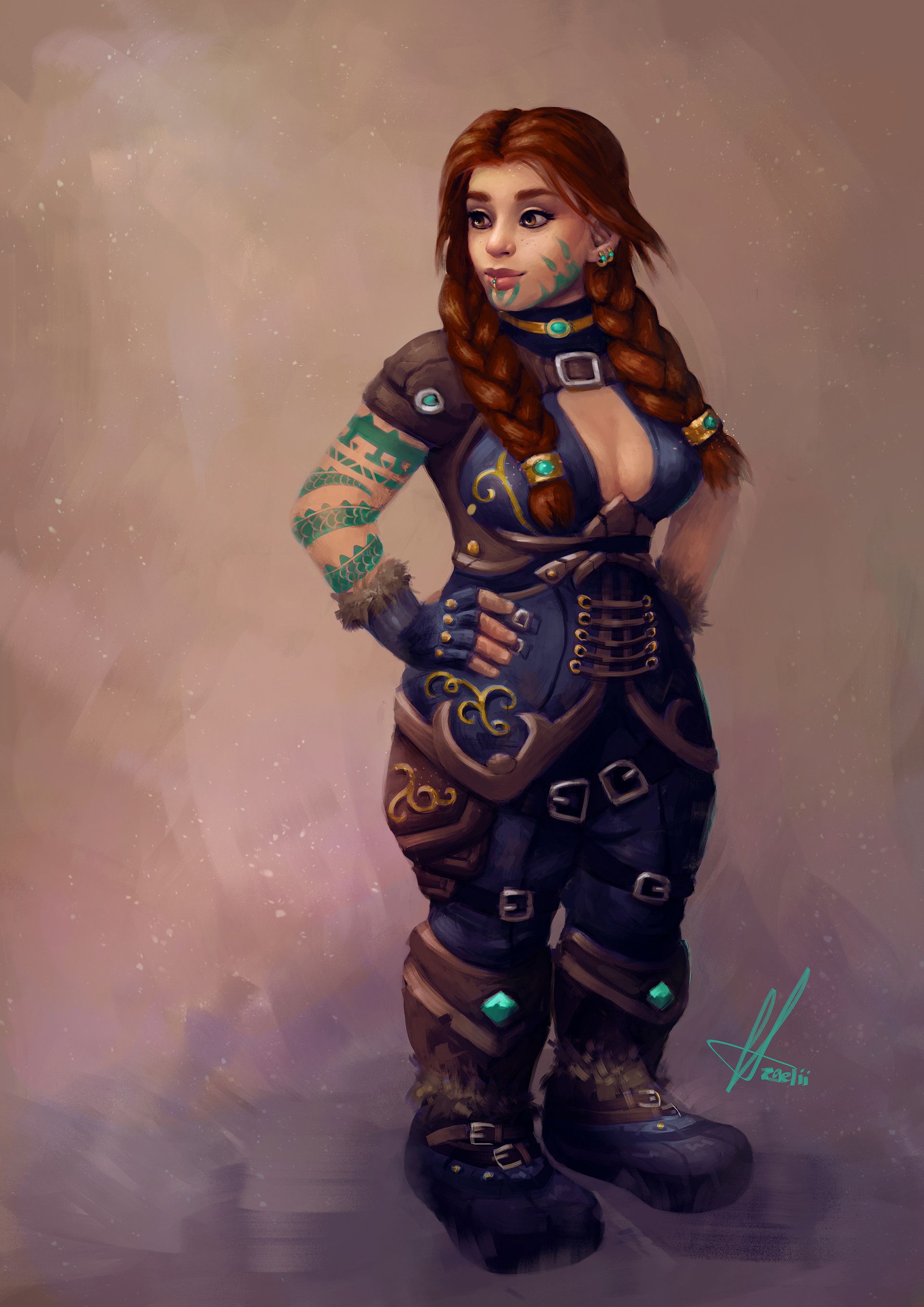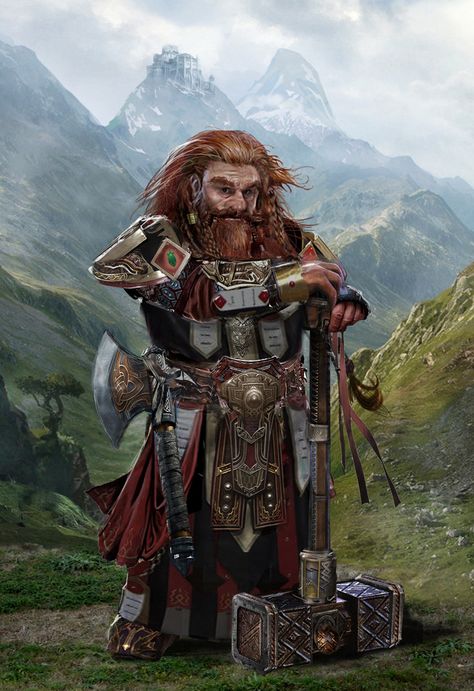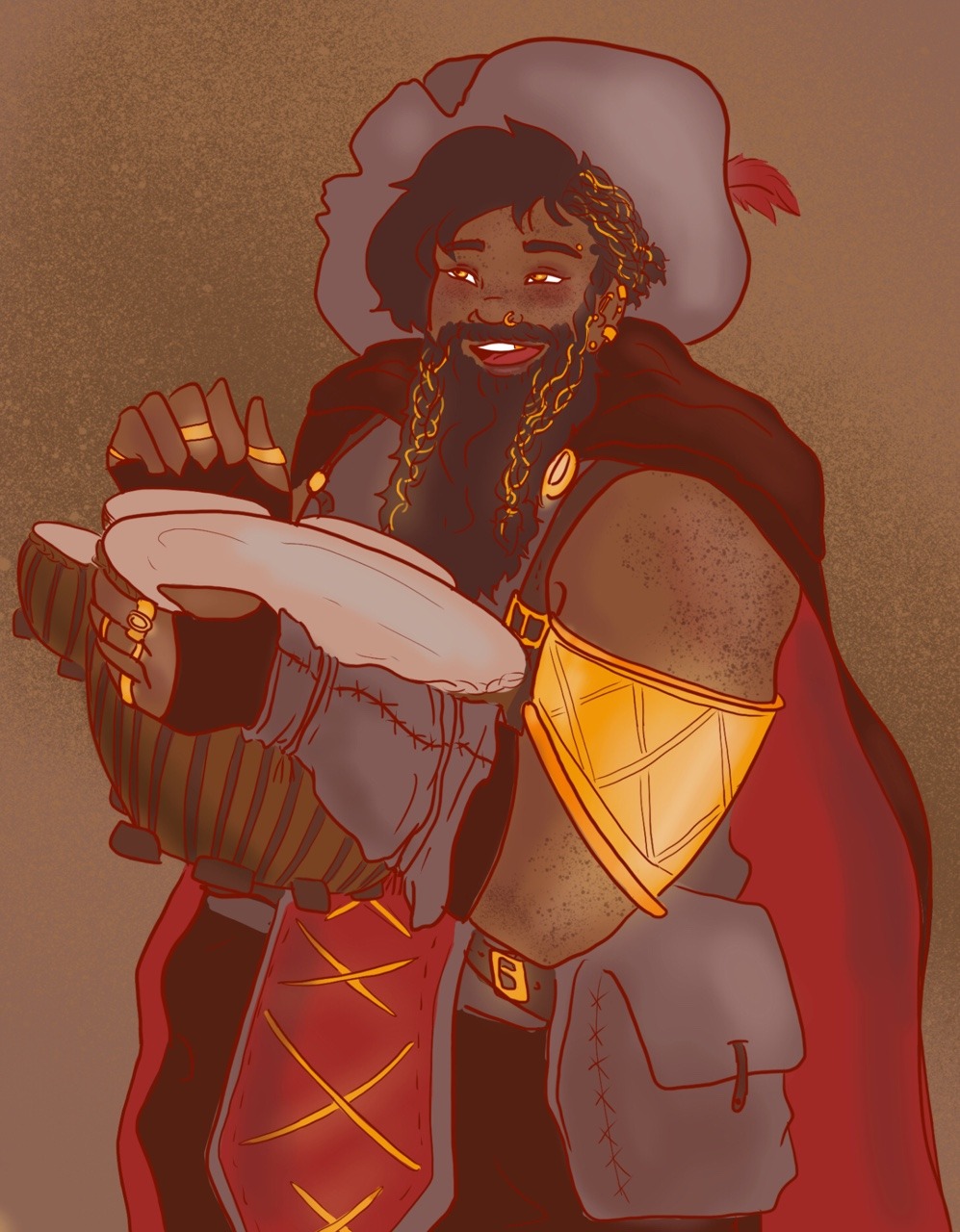Dwarf
A history of a kingdom rich in ancient grandeur, ancient halls carved into the roots of mountains, the echoing of picks and hammers in deep mines and blazing forges, a commitment to clan and tradition, and a burning hatred of goblins and orcs these common threads unite all dwarves. No home to call their own, the Dwarves of Cevantia have spread out far and wide to find their place in the world. Many hoping to find the long lost ancestral Axe of the First Dwarven King as the hope to bring their kingdom back to it's former glory.
Appearance
Bold and hardy, dwarves are known as skilled warriors, miners, and workers of stone and metal. Though they stand well under 5 feet tall, dwarves are so broad and compact that they can weigh as much as a human standing nearly two feet taller. Their courage and endurance are also easily a match for any of the larger folk. Dwarven skin ranges from deep brown to a paler hue tinged with red, but the most common shades are light brown or deep tan, like certain tones of earth. Their hair, worn long but in simple styles, is usually black, gray, or brown, though paler dwarves often have red hair. Male dwarves value their beards highly and groom them carefully.Mountain Dwarf
The Mountain Dwarves were said to have been one of the first races. It is believed that the mountain dwarves were shaped from the hardest stones on Cevantia. Resilient, proud, and faithful, the mountain dwarves are the embodiment of all retribution, companionship, and craftsmanship, which makes them exceptional and trustworthy allies.Born of Stone
The mountain dwarves were born of stone, live beneath stone, and are masters of stonework. Their craftsmanship easily outmatches the craftsmanship of any other race, and they are proud to display it. Dwarven artifacts are made from wrought iron, burnt gold, and gleaming gemstones, and are easily identifiable by their rough edges, round shapes, and elemental properties. Even dwarven weapons and architecture are adorned with these stylistic choices, and a dwarven weapon introduced into a human family is passed down for generations to come. Because of their affinity for the mountains and the earth, mountain dwarves often get nervous or agitated when they are in unfamiliar territory, such as a heavily forested region, a swamp, a sprawling open air city, or out at sea, far from the welcoming confines of their rocky homelands. This causes many to believe that dwarves are hot-headed and rowdy, but oftentimes their loud voice of displeasure is only because of the environment that surrounds them, and not the company.Hill Dwarf (Half-Dwarf)
The Hill Dwarves are descended from a long line of human-dwarven interrelationships, which stemmed from generations of truce between the two races. Unlike a majority of the hybrid races that exist across the world, the hill dwarves, also known as half-dwarves, are some of the most respected and widespread. Hill dwarves combine the leadership values of humans with the craftsmanship of mountain dwarves to lead a skillful and generous people.Living to Meet Expectations
Hill dwarves, as respected and beloved as they are, face the dilemma of fulfilling two completely different cultural lives; the life of a dwarf, and the life of a human. Frequently are hill dwarves driven to uphold their place in human society, but this drive comes at the cost of sacrificing the expectations of their dwarven elders, who look down upon young hill dwarves as disrespectful and ignorant of their heritage, but this is ever far from the truth. A hill dwarf that lets their dwarven heritage consume them quickly find that their place in dwarven society may not be as revered as it seems, and they are often given menial tasks to carry out in servitude to mountain dwarves, very rarely seeing any position above a steward, messenger, or squire. Hill dwarves that find themselves in this position are quick to be angered and dismissive of their heritage, though they are more likely to leave their clan to pursue a different life than to cause an uprising, keeping the respect of their true dwarven kin despite their evidence of having been disowned.Features
- Ability Score Increase. Your Constitution score increases by 2.
- Age. Dwarves mature at the same rate as humans, but they're considered young until they reach the age of 50. On average, they live about 350 years.
- Size. Dwarves stand between 4 and 5 feet tall and average about 150 pounds. Your size is Medium.
- Speed. Your base walking speed is 25 feet. Your speed is not reduced by wearing heavy armor.
- Darkvision. Accustomed to life underground, you have superior vision in dark and dim conditions. You can see in dim light within 60 feet of you as if it were bright light, and in darkness as if it were dim light. You can't discern color in darkness, only shades of gray.
- Dwarven Resilience. You have advantage on saving throws against poison, and you have resistance against poison damage.
- Dwarven Combat Training. You have proficiency with the battleaxe, handaxe, light hammer, and warhammer.
- Tool Proficiency. You gain proficiency with the artisan's tools of your choice: smith's tools, brewer's supplies, or mason's tools.
- Stonecunning. Whenever you make an Intelligence (History) check related to the origin of stonework, you are considered proficient in the History skill and add double your proficiency bonus to the check, instead of your normal proficiency bonus.
- Languages. You can speak, read, and write Common and Dwarvish. Dwarvish is full of hard consonants and guttural sounds, and those characteristics spill over into whatever other language a dwarf might speak.
Hill Dwarf
- Ability Score Increase. Your Wisdom score increases by 1.
- Dwarven Toughness. Your hit point maximum increases by 1, and it increases by 1 every time you gain a level.
Mountain Dwarf
- Ability Score Increase. Your Strength score increases by 2.
- Dwarven Armor Training. You have proficiency with light and medium armor.
Related Organizations





